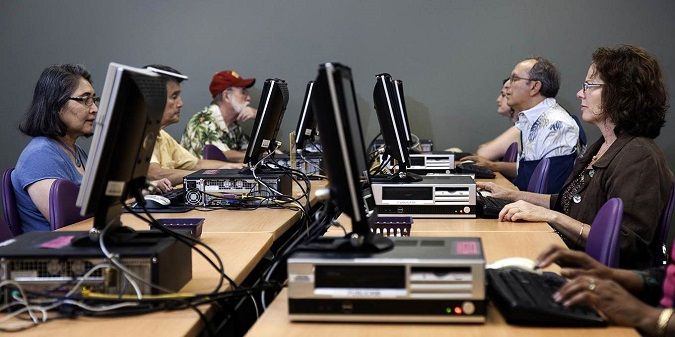
As we develop robots with increasingly human-like capabilities, we should take a closer look at our own. Only by learning to overcome – or at least evade – our cognitive limitations can we have long and fruitful careers in the new global economy.”
___
The Cognitive Limits of Lifelong Learning (Project Syndicate):
“As new technologies continue to upend industries and take over tasks once performed by humans, workers worldwide fear for their futures. But what will really prevent humans from competing effectively in the labor market is not the robots themselves, but rather our own minds, with all their psychological biases and cognitive limitations …
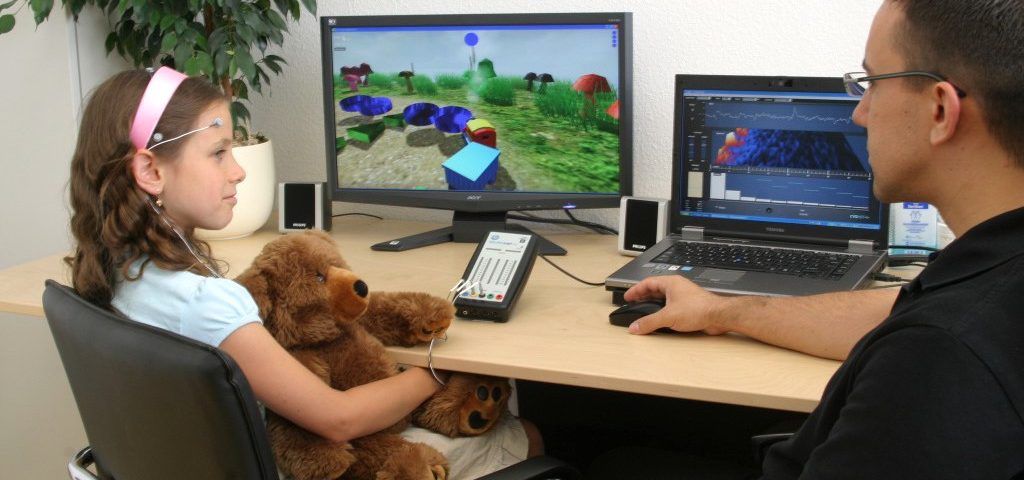
Fascinating findings: “1. Neurofeedback yields significant reductions in parent ratings of inattentive and hyperactive-impulsive symptoms. 2. These reductions persist for up to 2–12 months after neurofeedback ends. 3. Although medication has a larger initial effect, symptom reductions resulting from neurofeedback and medication may be comparable over a more extended time period.”
In neurofeedback treatment for ADHD, individuals learn to alter their typical pattern of brainwave activity, i.e., EEG activity, to one that is consistent with a focused and attentive state.
This is done by collecting EEG data from individuals as they focus on stimuli presented on a computer screen. Their ability to control the stimuli, e.g., keeping the smile on a smiley face keeping a video playing, depends on their maintaining an EEG state that reflects focused attention.
Over time, most individuals better at this. Supporters of neurofeedback argue that learning to alter EEG activity and focus better during training eventually generalizes to real-world tasks that require strong attention skills, e.g., reading, homework, etc.
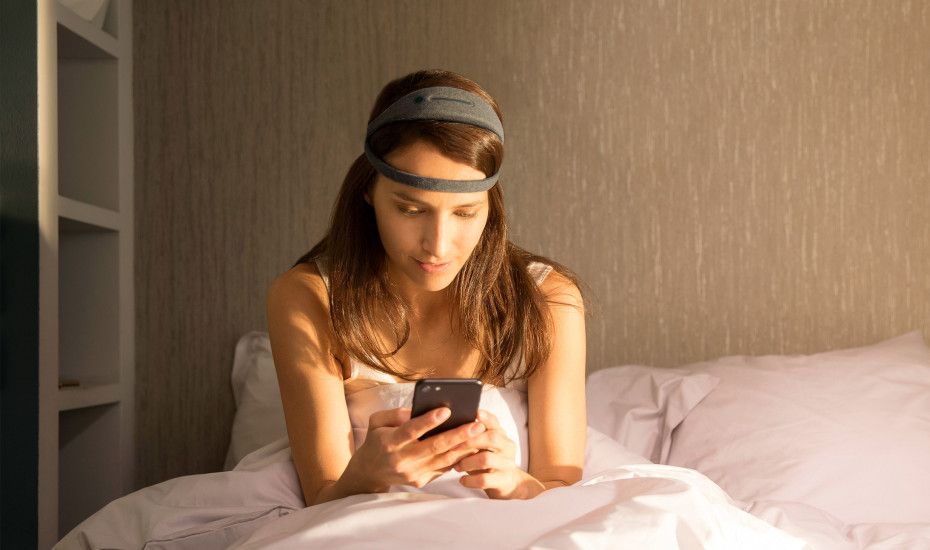
Dreeming big.
Dreem Announces $35 Million Financing from lead investors Johnson & Johnson Innovation and Bpifrance (press release):
“Dreem, a neurotechnology company, today announced the closing of a new round of funding, raising $35 million USD to rapidly accelerate product development, invest in strategic research and development, and advance the future of sleep technology. Last year, Dreem introduced a comprehensive solution to address a suite of sleep problems and enhance the quality of rest during the night. The Dreem headband monitors brain activity to track sleep accurately and uses auditory stimulation as a medium to help people fall asleep faster, get deeper sleep, and wake up refreshed.
With the $35 million investment, led by strategic investor JJDC, Dreem will bring next-generation sleep technology to markets across the globe and continue to invest in R & D for future sleep-related scientific discoveries and technological innovations … Dreem previously raised a total of $22 million, from billionaire French entrepreneur Xavier Niel, entrepreneur and biotech investor Dr. Laurent Alexandre, and one of the top French insurance leaders — MAIF. With additional investment from JJDC and Bpifrance, Dreem has raised nearly $60 million in less than four years.”

Good update on the science around popular mindfulness apps — “It is vital that we understand the potential benefits of engaging with such apps, and how these compare to programs that are taught in-person…”
Let me ask again…want to feel more Calm, get some Headspace, and practice Mindfulness Daily?
There are apps for that—hundreds of them, besides the three I just mentioned.
These apps make a promise: Rather than investing countless hours and dollars in mindfulness classes or mindfulness-based therapy, we can choose to meditate from the comfort of our smartphones. Users are flocking to mindfulness apps in hopes of cultivating kind attention to their own thoughts and feelings, and of reaping the mental and physical benefits that go along with mindfulness.

Only 35 per cent of five- to 17-year-olds and 62 per cent of children ages 3 and 4 are getting the recommended physical-activity levels for their age group (Editor’s note: around 60 minutes of moderate-to-vigorous physical activity daily, including vigorous-intensity activity on at least 3 days per week) and that this may be having an impact on the health of their brains.
___ Getting kids outside and active could help with brain health: Participaction report (The Globe and Mail): The physical benefits of kids leading an active lifestyle, including better heart heal…

Better than coffee smile
___ A great way to learn more about our brains and minds is to look at how we can trick them—that is, to see how we react to brain teasers and visual illusions. Below are four fun optical illusio…
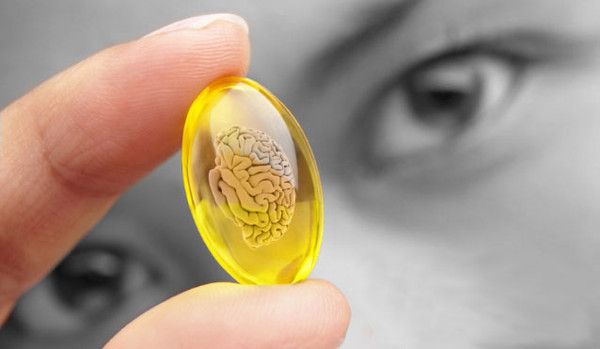
Why is no one talking about this? — “More than one-third of U.S. adults are taking prescription medications that may lead to depression, new research finds. The study, published in the Journal of the American Medical Association, warns that depression is a potential side effect of more than 200 commonly prescribed medications, including beta blockers for blood pressure, birth control pills, antacids, and painkillers.”
___ Many Americans taking common meds that may cause depression, study finds (CBS News): “More than one-third of U.S. adults are taking prescription medications that may lead to depression, new research finds. The study, published in the Journal of the American Medical Association, warns that depression is a potential.
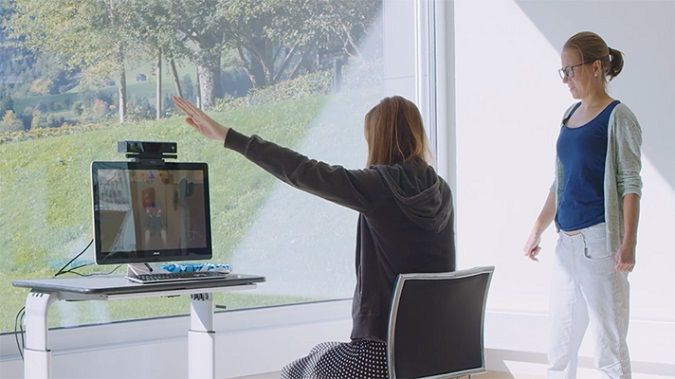
Good news: The toolkit for neurorehabilitation is growing.
___ MindMaze Consolidates First-ever FDA Approval for Inpatient and Outpatient Neurorehabilitation Therapy (press release): MindMaze, a leader in braintech, has today announced that it has obtained FDA clearance to launch its portable neurorehabilitation product, MindMotion GO, in the United States. Together with.
GO, in the United States. Together with.
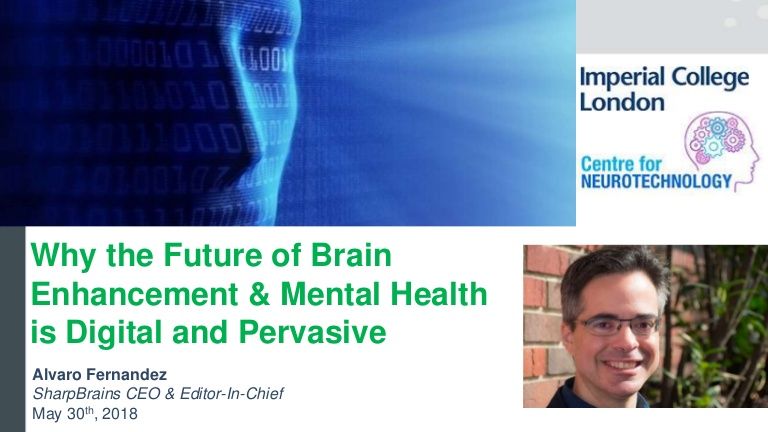
It was a great pleasure to share latest data and insights with a fantastic community of researchers, engineers, innovators and investors last week, hosted by the Imperial College Centre for Neurotechnology in London. Hope you enjoy the overview slides!
Presentation by Alvaro Fernandez hosted by the Imperial College Centre for Neurotechnology in London.
Description: As seen in patent and investment trends, research findings and consumer/patient behaviors, Mental Health and Brain Enhancement are rapidly evolving in transformational ways which some call “empowering” and some “controversial.” Alvaro Fernandez, Editor-in-Chief of independent market research firm SharpBrains, will present and discuss the latest market data and forecasts on how digital platforms are poised to revolutionize brain & mental health diagnostics, monitoring, therapies and enhancement.
Programme:

Very promising since “Identifying what changes are happening in the brain when interventions successfully reduce depressive symptoms could allow us to create more effective, pharmaceutical-free approaches to help alleviate depression in people who experience chronic traumatic brain injury symptoms,” said study author Dr. Sandra Bond Chapman, founder and chief director of the Center for BrainHealth.
Images show prefrontal connectivity patterns after cognitive training in individuals who suffered traumatic brain injury. Kihwan Han et al (2018) _____ Cognitive training reduces depression, rebuilds injured brain structure & connectivity after traumatic brain injury (UT-Dallas release): “New research from the Center.